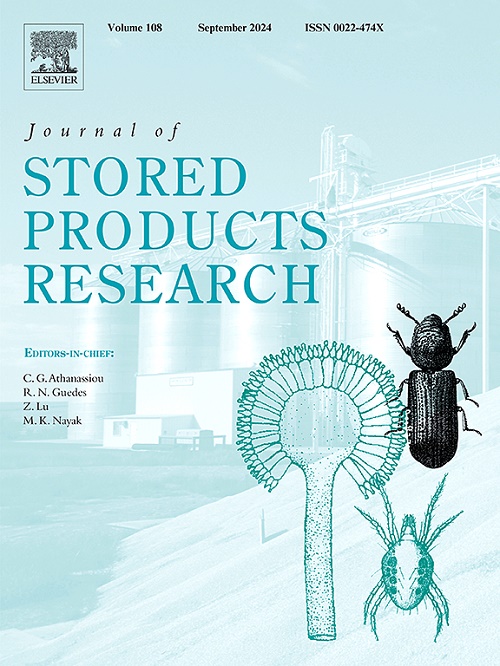MSPCNeXt: Multi-scale parallel convolution for identifying unsound kernels in stored wheat
IF 2.7
2区 农林科学
Q1 ENTOMOLOGY
引用次数: 0
Abstract
Recognizing unsound kernels in wheat is crucial for wheat storage. Most current techniques rely solely on single-scale convolutional neural networks, overlooking the importance of extracting multi-scale information in the same convolutional layer. This may lead to overly homogeneous extracted features and lower recognition accuracy. To solve this issue, we propose the Multi-scale Parallel Convolution Neural Network (MSPCNeXt). This model extracts image features by parallelizing convolutional kernels with different scales. The MSPCNeXt-Block comprises two versions, i.e., MSPCNeXt-v1 and MSPCNeXt-v2. After optimizing the parallel branching by using large kernel decomposition and feature segmentation, MSPCNeXt-v1 and MSPCNeXt-v2 ensure a broad receptive field while lowering the model complexity. We validate the effectiveness of MSPCNeXt on the public dataset GrainSpace. Compared with the baseline model ConvNeXt, MSPCNeXt-v1 improves the mean accuracy by 2.531% and Top-1 accuracy by 2.286%, but the model size is too large. MSPCNeXt-v2 improves the mean accuracy by 2.224% and Top-1 accuracy by 1.857%. Meanwhile, the computation amount is reduced by 0.456G and the number of parameters is reduced by 5.986M. In conclusion, MSPCNeXt provides a more efficient technical tool for sampling and testing of wheat storage and related processes.
求助全文
约1分钟内获得全文
求助全文
来源期刊
CiteScore
5.70
自引率
18.50%
发文量
112
审稿时长
45 days
期刊介绍:
The Journal of Stored Products Research provides an international medium for the publication of both reviews and original results from laboratory and field studies on the preservation and safety of stored products, notably food stocks, covering storage-related problems from the producer through the supply chain to the consumer. Stored products are characterised by having relatively low moisture content and include raw and semi-processed foods, animal feedstuffs, and a range of other durable items, including materials such as clothing or museum artefacts.

 求助内容:
求助内容: 应助结果提醒方式:
应助结果提醒方式:


